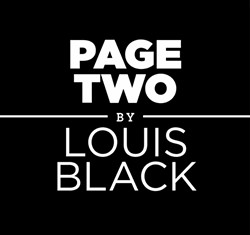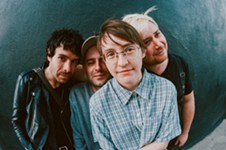Page Two
By Louis Black, Fri., Dec. 4, 1998

These are among the most important issues facing the city. Certainly, continued development in the Hill Country is an important concern for its future. But suburban sprawl is here, the nature of this area has changed and will continue to change. What kind of city Austin will be in the future will very much be determined by the central city's development. There are pluses and minuses to all three of these issues.
Most open inner-city land will disappear over the next two decades -- already, it's startling to see an empty lot while driving through any core neighborhood because so many have been developed in the last decade. Austin is a thriving city and its core really is downtown. While other communities worry about revitalizing their downtown, our concern must be about over-developing ours.
These three issues the council is facing define the philosophical geography of the future. The Triangle, an admirably negotiated compromise, will still (even modified) change the nature of that inner-city neighborhood. This is unavoidable. Despite all this city's posturing about live music, in the name of progress they are willing to take out Liberty Lunch, a cherished, thriving Austin music institution. The development, along with the Convention Center expansion and planned residential development, will lead to a downtown we won't recognize in 10 years. And finally, the heart of this issue, South Austin.
Once almost a separate community -- Austin's Bubba-land -- South Austin's gentrification continues at an aggressive pace. Before the city is a proposed moratorium on certain kinds of businesses on South Congress (auto shops, plasma centers, any drive-up, etc.). The motive is to clean up the neighborhood, to control new business, and perhaps to drive out old undesirable businesses. This will clean up South Congress and promote the gentrification of neighborhoods around the street. South Austin will gradually evolve into just another Austin neighborhood.
Right here is where I should offer some deft opinion: This is good; this is bad. In fact, I think it is some of both. For years we've been talking about the compact city and revitalizing downtown. Well, it's here, and it is going to be lots of tall buildings with most of the open areas that now exist developed. Austin will change; that's clear, the question is how.
As Nick Barbaro noted two weeks ago in this space, it's not just that we are for or against any of these plans. We are concerned with how they are going to go together. The Watson council has aggressively tackled the city's future, but are they being too ambitious and not careful enough? The day this paper hits the streets, with precious little discussion, the council is going to vote on this downtown development and a six-month South Congress moratorium. Get that -- they are voting on these. We are not at the beginning of the planning road, but rather the beginning of the implementation road with planning lagging behind. Has our visionary council let accomplishment get in the way of vision? Are we moving too quickly -- just to move?
Crucial are the details of what the changes are, where they happen, how they are executed, and how this fits together in a pattern for the whole city. Will we throw the baby out with the bathwater, losing not just the Liberty Lunches and open space, but also the eccentric mix that defines this city? And will this forthcoming brave new city have much to do with Austin?
Dire concerns out of the way, though South Austin is unarguably changing, it is still in the state where it seems revitalized rather than gentrified. There are huge pockets of old South Austin neighborhoods that have changed little in the last two decades; there are also areas that have changed immeasurably. This issue, the hardy crew headed by Kate X Messer mapped and plotted and charted South Austin.
Even though our office has always resided in North Austin, we've always thought of ourselves as a South Austin paper (we're about neighborhood more than industry, as much about the past as the present and future, and everything we do has music going on). And our densest concentration of readers is in one South Austin zip code -- 78704.
So this issue is not just a street-by-street, business-by-business guide in the center pull-out section; it's also, throughout the rest of the issue, our editorial team taking a look at the politics, people, culture, and neighborhoods of South Austin. As always, we look forward to comments, additions, and suggestions.








